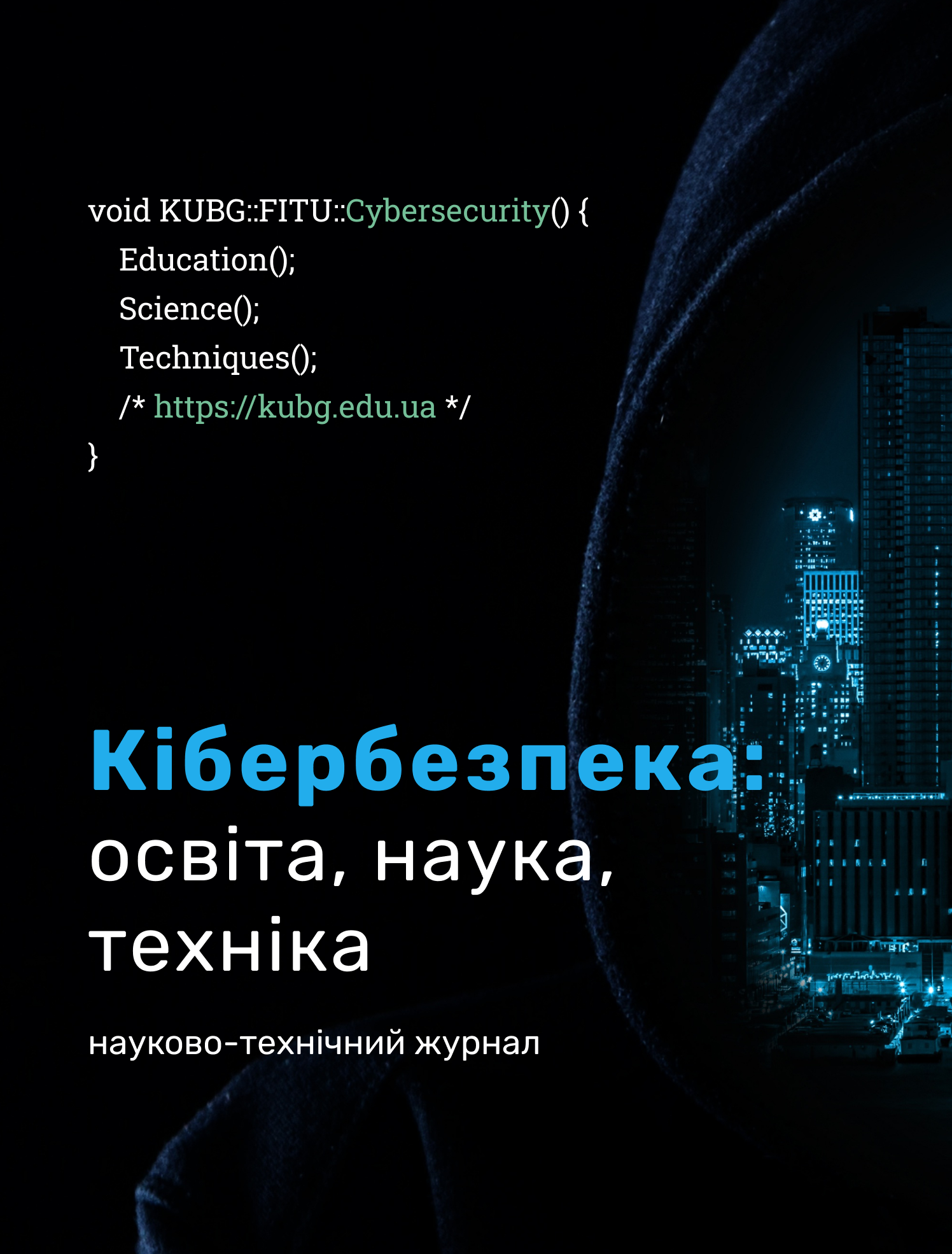IMPLEMENTATION OF A BAYESIAN NETWORK IN PYTHON FOR ANALYSIS OF CYBERCRIMES ASSOCIATED WITH DDOS ATTACKS
DOI:
https://doi.org/10.28925/2663-4023.2024.24.161171Keywords:
DDoS attack, Bayesian network, modeling, crime investigation, PythonAbstract
The research of cybercrimes, including DDoS attacks, is becoming increasingly important in the context of heightened attention to cybersecurity, protection of information and infrastructure of organizations in the modern world that rely on digital technologies and computer systems. The article argues that the use of Bayesian network models (hereinafter Bayesian networks - BN) for the analysis of cybercrimes (using distributed DDoS attacks as an example) will allow taking into account numerous variables and probabilities. This makes similar research more accurate and reliable. Using the example of BN research in the GeNIe applied software package, the process of using BN apparatus for the cybercrime investigation task related to the implementation of DDoS attacks from an attacker's computer is demonstrated. The described BN helps forensic experts in investigating such cybercrimes to identify motives and connections between attack participants, which undoubtedly improves the efficiency of investigations. The demonstration of BN application using the GeNIe modeling package, as well as the implementation of such BN in the PyCharm IDE environment, emphasizes the potential of Bayesian network models to enhance the quality of investigations, particularly those related to DDoS attacks. The description of the Python language software implementation of such BN proposed in the article aims to improve the efficiency of similar tools, making it more practical-oriented and providing new opportunities for the analysis of cybercrimes associated with DDoS attacks. It is shown that the development of such software opens the way for deeper analysis and understanding of such cybercrimes, which is an important step in combating them. Therefore, the development of such software (SW) is a promising direction in the field of cybersecurity, emphasizing its relevance and significance in the modern digital world.
Downloads
References
Doshi, K., Yilmaz, Y., & Uludag, S. (2021). Timely detection and mitigation of stealthy DDoS attacks via IoT networks. IEEE Transactions on Dependable and Secure Computing, 18(5), 2164–2176.
Mittal, M., Kumar, K., & Behal, S. (2023). Deep learning approaches for detecting DDoS attacks: A systematic review. Soft computing, 27(18), 13039–13075.
Sarmento, A. G., Yeo, K. C., Azam, S., Karim, A., Al Mamun, A., & Shanmugam, B. (2021). Applying big data analytics in DDos forensics: challenges and opportunities. Cybersecurity, Privacy and Freedom Protection in the Connected World: Proceedings of the 13th International Conference on Global Security, Safety and Sustainability, 235–252.
Traer, S., & Bednar, P. (2021). Motives behind ddos attacks. Digital Transformation and Human Behavior: Innovation for People and Organisations, 135–147.
Samiksha, S. (2021). Investigating an association between DDoS and Phishing attacks (Master’s thesis, University of Twente).
Kopp, D., Dietzel, C., & Hohlfeld, O. (2021). DDoS never dies? An IXP perspective on DDoS amplification attacks. International Conference on Passive and Active Network Measurement, 284–301).
Reddy, K. G., & Thilagam, P. S. (2020). Naïve Bayes classifier to mitigate the DDoS attacks severity in ad-hoc networks. International Journal of Communication Networks and Information Security, 12(2), 221–226.
Singh, S., Kumari, K., Gupta, S., Dua, A., & Kumar, N. (2020). Detecting different attack instances of DDoS vulnerabilities on edge network of fog computing using gaussian naive bayesian classifier. IEEE international conference on communications workshops (ICC Workshops), 1–6.
Tse, H., Chow, K.-P., & Kwan, M. (2013). A Generic Bayesian Belief Model for Similar Cyber Crimes. 9th International Conference on Digital Forensics (DF), 243–255. https://doi.org/10.1007/978-3-642-41148-9_17
Liu, X., Ren, J., He, H., Zhang, B., Song, C., & Wang, Y. (2021). A fast all-packets-based DDoS attack detection approach based on network graph and graph kernel. Journal of Network and Computer Applications, 185, 103079.
Ates, C., Özdel, S., & Anarim, E. (2020). Graph-based fuzzy approach against DDoS attacks. Journal of Intelligent & Fuzzy Systems, 39(5), 6315–6324.
Mustapha, A., Khatoun, R., Zeadally, S., Chbib, F., Fadlallah, A., Fahs, W., & El Attar, A. (2023). Detecting DDoS attacks using adversarial neural network. Computers & Security, 127, 103117.
Chartuni, A., & Márquez, J. (2021). Multi-classifier of DDoS attacks in computer networks built on neural networks. Applied Sciences, 11(22), 10609.
Yousuf, O., & Mir, R. N. (2022). DDoS attack detection in Internet of Things using recurrent neural network. Computers and Electrical Engineering, 101, 108034.
Chen, C. L., & Chen, J. M. (2021). Use of MARKOV Chain for Early Detecting DDoS Attacks. International Journal of Network Security & Its Applications (IJNSA), 13(4).
Balaji Bharatwaj, M., Aditya Reddy, M., Senthil Kumar, T., & Vajipayajula, S. (2022). Detection of DoS and DDoS attacks using hidden markov model. Inventive Communication and Computational Technologies: Proceedings of ICICCT 2021, 979–992.
Balarezo, J. F., Wang, S., Chavez, K. G., Al-Hourani, A., & Kandeepan, S. (2022). A survey on DoS/DDoS attacks mathematical modelling for traditional, SDN and virtual networks. Engineering Science and Technology, an International Journal, 31, 101065.
Banitalebi Dehkordi, A., Soltanaghaei, M., & Boroujeni, F. Z. (2021). The DDoS attacks detection through machine learning and statistical methods in SDN. The Journal of Supercomputing, 77(3), 2383–2415.
Published
How to Cite
Issue
Section
License
Copyright (c) 2024 Валерій Лахно , Семен Волошин, Сергій Мамченко , Володимир Матієвський , Мирослав Лахно

This work is licensed under a Creative Commons Attribution-NonCommercial-ShareAlike 4.0 International License.




